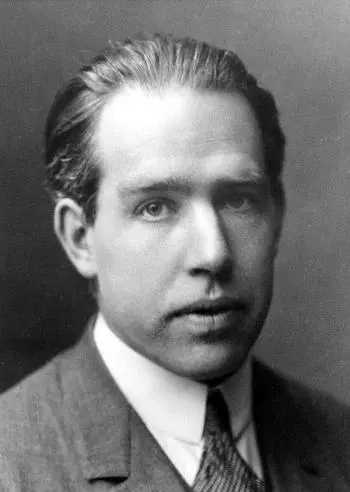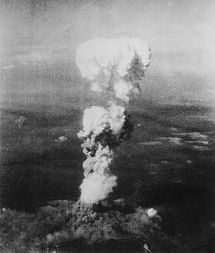
Niels Bohr, a world-renowned Danish physicist, left an indelible mark on the history of theoretical and experimental physics.
His contributions to the development of atomic models and his pioneering work in the field of nuclear energy have been fundamental to our understanding of the subatomic world and nuclear technology.
Biography of Niels Bohr
Birth and Early Years
Niels Henrik David Bohr was born on October 7, 1885, in Copenhagen, Denmark, into an academic family. His father, Christian Bohr, was a renowned physiologist, and his mother, Ellen Adler Bohr, came from a wealthy family. This family background influenced his intellectual development and his interest in science.
Education
Bohr initially studied engineering at the Technical University of Copenhagen, but his true passion was physics. In 1905, Bohr moved to England, where he studied with the famous physicist JJ Thomson at the University of Cambridge. During this time, he immersed himself in emerging quantum theory and made connections with other notable physicists, such as Ernest Rutherford.
Bohr's atomic model
 In 1913, Niels Bohr published his atomic model, which revolutionized our understanding of the structure of the atom.
In 1913, Niels Bohr published his atomic model, which revolutionized our understanding of the structure of the atom.
This model, based on quantum theory, postulated that electrons moved in quantized orbits around the nucleus, and could only change orbit by emitting or absorbing photons of specific energy. This atomic theory elegantly explained the emission line spectrum of hydrogen and laid the foundation for future quantum mechanics.
Copenhagen Institute of Theoretical Physics
In 1920, Bohr founded the Institute of Theoretical Physics in Copenhagen, which became an epicenter of research in theoretical and quantum physics. The institute attracted scientists from around the world and became a place for the exchange of ideas and collaboration.
Contribution to atomic energy
During the Second World War, Bohr was forced to flee Denmark due to the Nazi occupation.
He took refuge in the United States and collaborated in the Manhattan Project, the Allied nuclear weapons development program. Bohr played a crucial role in providing valuable information on nuclear fission and the construction of nuclear reactors.
Nobel Prize in Physics
In 1922, Niels Bohr was awarded the Nobel Prize in Physics for his pioneering research into the structure of atoms and radiation. This recognition cemented his status as one of the most influential physicists of the 20th century.
Niels Bohr's contributions to atomic models
Bohr's atomic model had a profound impact on physics and chemistry, as it provided an accurate explanation of the structure of atoms and their behavior. His contributions include:
-
Explanation of the line spectrum: Bohr was able to explain the emission and absorption line spectrum of atoms, which until then had baffled scientists. His theory of quantized energy levels allowed us to understand why atoms emit and absorb light at certain specific wavelengths.
-
Fundamentals of Quantum Mechanics: Bohr's model paved the way for the development of quantum mechanics, a more complete theory describing the behavior of subatomic particles. Quantum mechanics is fundamental to modern physics and has had applications in fields as diverse as electronics and quantum chemistry.
Niels Bohr's contributions to nuclear energy
Bohr's contribution to nuclear energy was equally significant:
Nuclear fision
Bohr provided essential information about nuclear fission, the process in which a heavy nucleus splits into lighter nuclei, releasing a large amount of energy.
 His knowledge was crucial for the development of nuclear weapons during World War II within the Manhattan project led by Robert Oppenheimer and for subsequent research into nuclear energy for peaceful purposes.
His knowledge was crucial for the development of nuclear weapons during World War II within the Manhattan project led by Robert Oppenheimer and for subsequent research into nuclear energy for peaceful purposes.
The relationship between Niels Bohr and J. Robert Oppenheimer centered on their collaboration on the Manhattan Project during World War II. Bohr joined the project as an advisor and brought his expertise in nuclear fission and quantum theory.
Development of nuclear reactors
Bohr contributed to the design of nuclear reactors and to the understanding of nuclear restraint and criticism, essential aspects of generating energy from nuclear fission in nuclear power plants.
Legacy and conclusion
Niels Bohr left a lasting legacy in physics and nuclear energy. His atomic modeling and his work on nuclear fission laid the foundation for later developments in these fields.
His influence on the scientific community endures to this day, and his spirit of research and collaboration continues to inspire generations of scientists. The life and work of Niels Bohr are a testimony to the human capacity to understand and master the fundamental forces of nature.
In short, Niels Bohr was a giant of physics whose contributions to atomic models and nuclear energy have left an indelible mark on the history of science. His tireless pursuit of knowledge and his ability to apply his ideas practically have ensured him a prominent place in human history.


